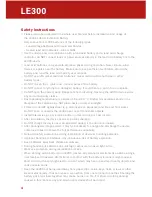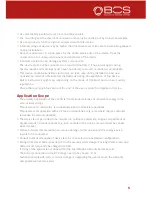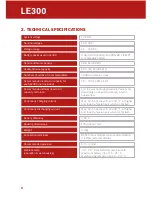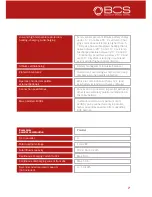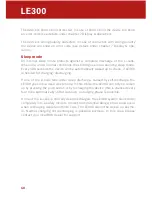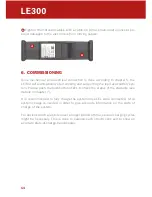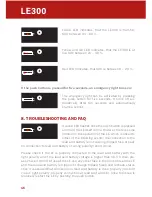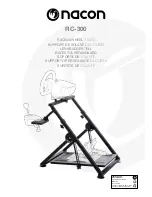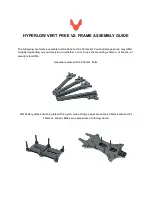
18
10. STORAGE
11. TRANSPORTATION
The LE300 has been designed to last at least ten years of normal use. If the
product is stored for a long period of time, please recharge the device every six
month. Therefore, connect the system to either a photovoltaic (PV) module or to
a direct current (DC) power source (in each case the usage of a lead acid charge
controller is mandatory). Please be aware that batteries will get damaged by
deep discharge, if not recharged regularly.
Note: When the LE300 is stored empty for longer periods, it can become da-
maged despite the low self-discharge and the LE300 capacity may be strongly
reduced.
Store the LE300 in a dry and well-ventilated location. Protect the product against
moisture and water. The LE300 can be stored at temperatures between 10 °C
and 30 °C. Take care that the maximal storage temperature is not exceeded.
Avoid relative humidity over 85 % as well as condensation.
The LE300 is UN38.3 certified, nonetheless it is subject to the Dangerous Goods
Legislation requirements. Private users can transport undamaged LE300 by
road without further requirements.
When being transported by commercial users or third parties (e.g. air transport
or forwarding agency), special requirements on packaging and labelling must be
observed (e.g. ADR regulations). If necessary, an expert for hazardous materials
can be consulted when preparing the item for shipping.
Dispatch LE300 only when the housing is undamaged. Tape or mask off open
contacts and pack up the LE300 in such a manner that it cannot move around
in the packaging.
Inform your parcel service that the package contains dangerous goods. Please
also observe the possibility of more detailed national regulations.
In case of questions concerning transport of the LE300, please refer to an autho-
rized BOS dealer. The BOS dealers can also provide suitable transport packaging.

